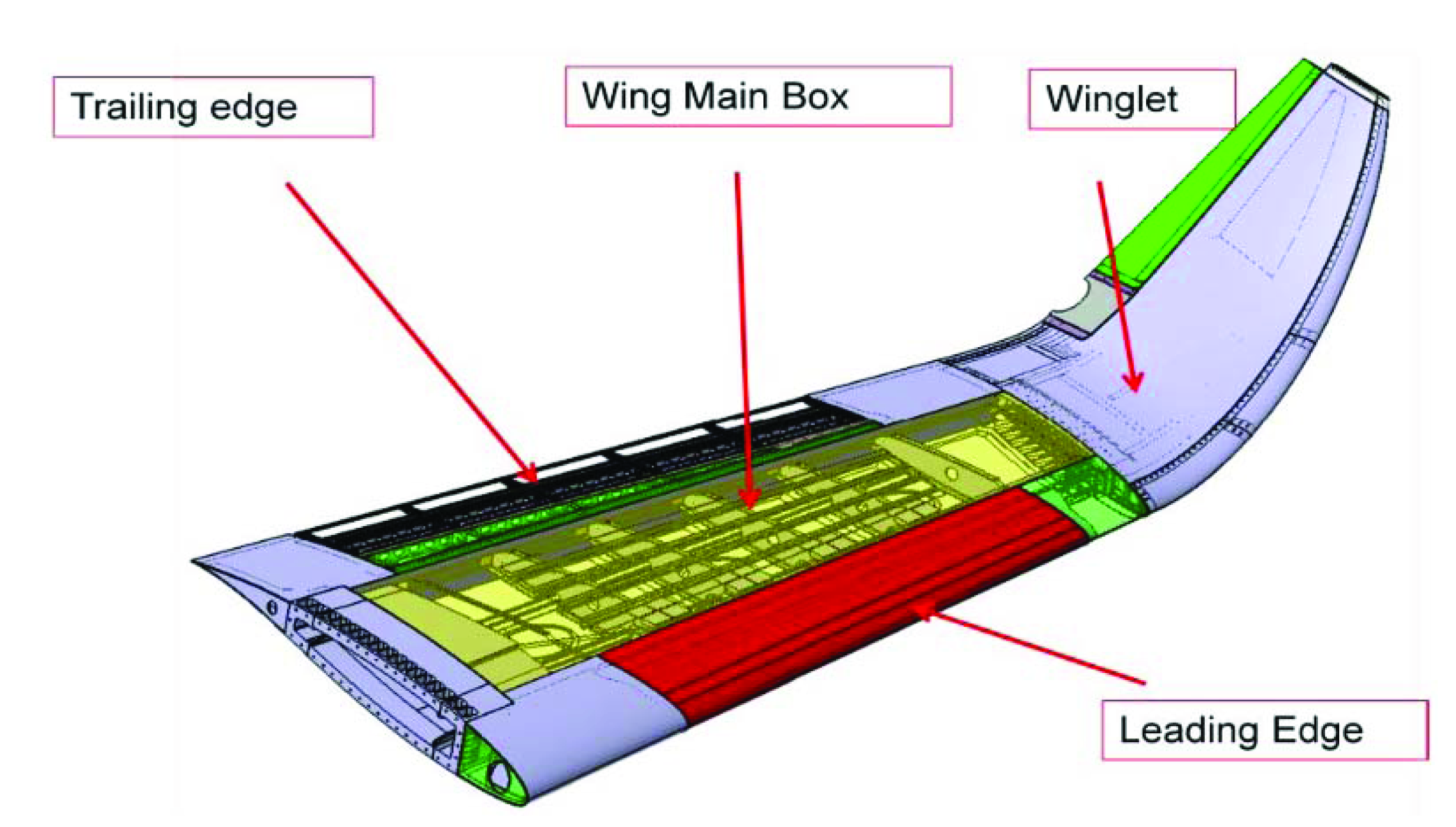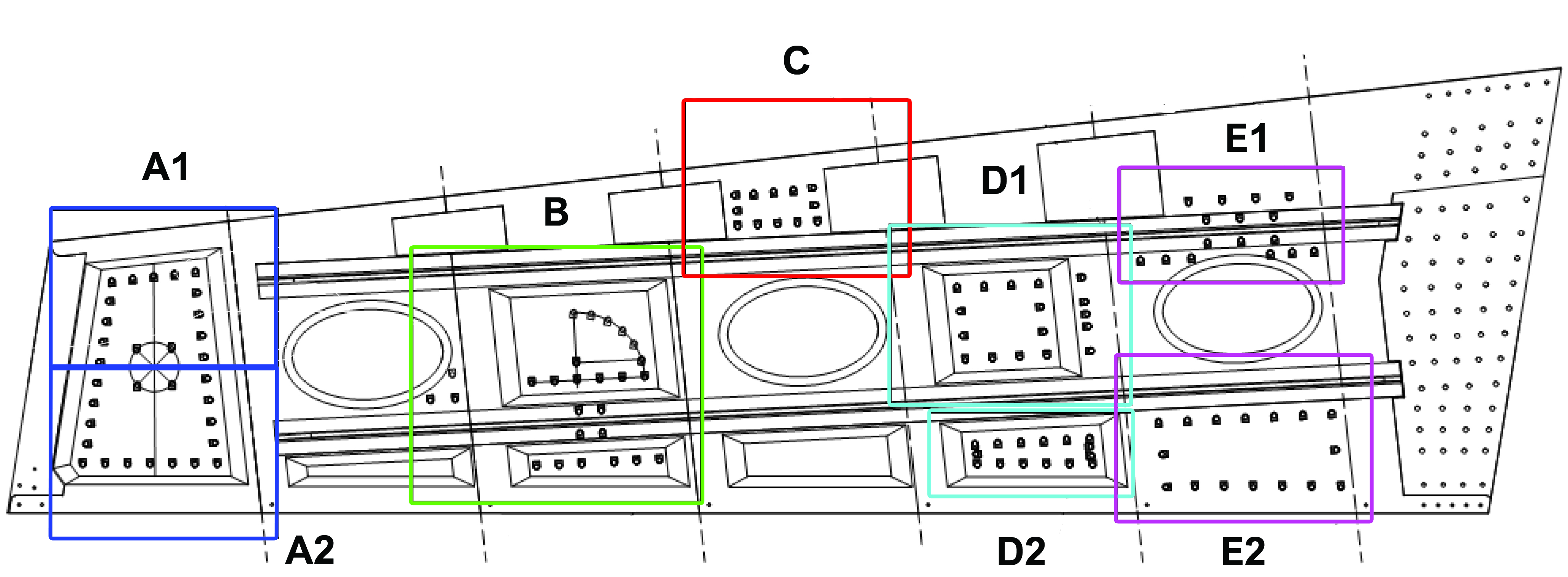Open DATABASE SHM GUIDED WAVES
This website stores an open database of piezo-actuated and -received guided waves (GWs) signals propagating in a composite panel of a full scale aeronautical structure. The composite panel closes the bottom part of a wing box that, along with the leading edge, the trailing edge and the wingtip, form an outer wing demonstrator of approximately 4.5 meters length and from 1.2 to 2.3 meters wide.

To
create the database a Structural Health Monitoring (SHM) system,
composed by a SW/HW central unit capable to control a network of
160 piezoelectric transducers secondary bonded on the composite
panel, has been realized. The SHM system has been designed to (i)
perform electromechanical impedance (EMI) measurement at each
transducer, in order to check for their reliability and bonding
strength, and (ii) to perform an active guided wave screening for
damage detection. More details are available in the following
paper:
Marzani, A., Testoni, N., De Marchi,
L., Messina, M., Monaco, E. and Apicella, A.,
An open database for benchmarking guided
waves structural health monitoring algorithms on a composite full-scale outer wing demonstrator.
Structural Health Monitoring (2019). https://doi.org/10.1177/1475921719889029


